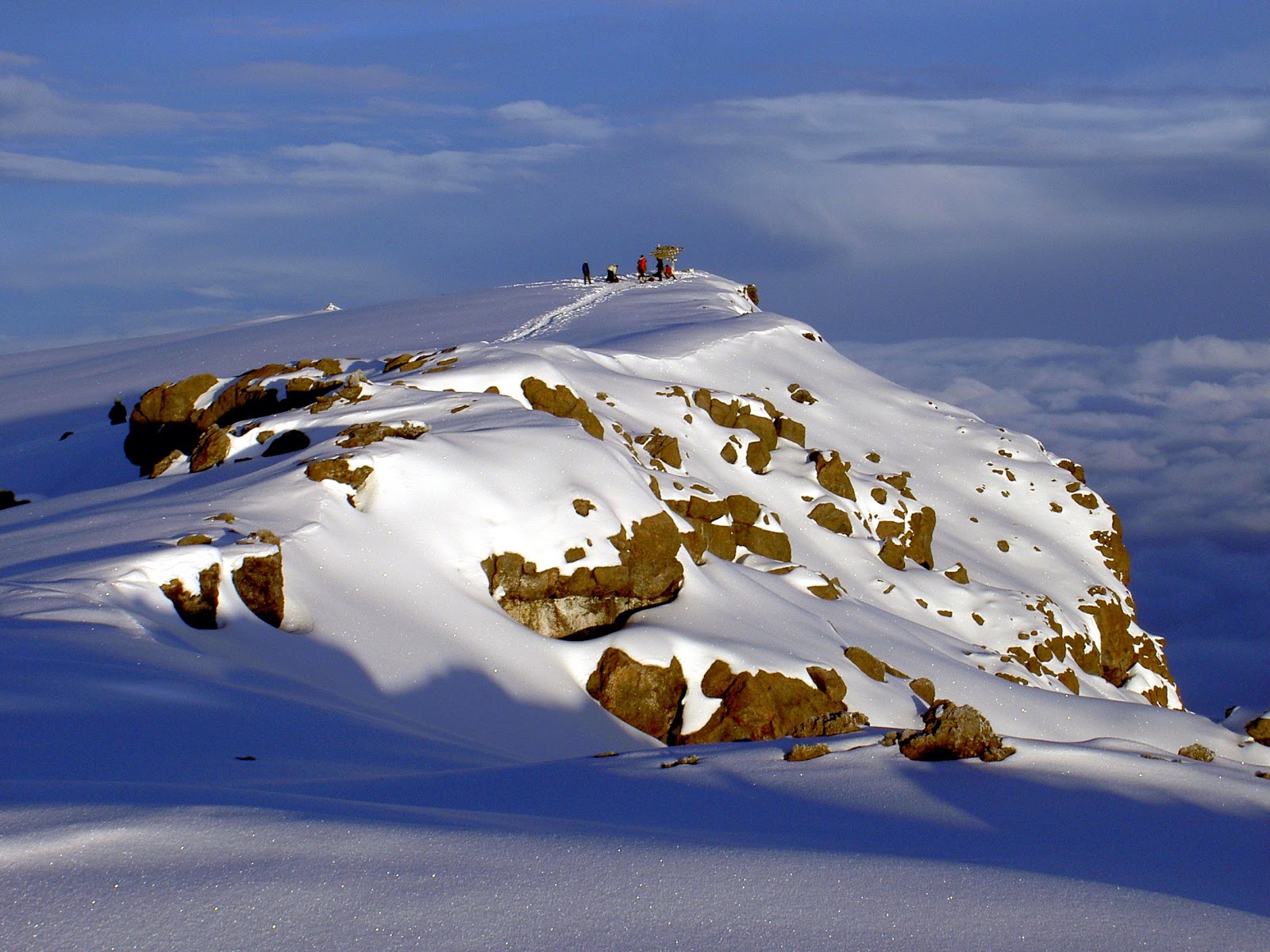Be replenished by the splendour of the
Kilimanjaro, Africa’s highest mountain
The Kilimanjaro mountain is situated in
the Kilimanjaro national park in Tanzania, East Africa. This spectacular mountain
is a dormant volcano, and the highest in Africa, with the highest point of the
mountain reaching a height of 5,149 m. The mountain is also the highest
free-standing mountain in the world. The mountain comprises three volcanic
cones; which are: Kibo 5,895 m (19,341 ft); Mawenzi 5,149 m
(16,893 ft); and Shira 3,962 m (13,000 ft). Uhuru peak is the
highest summit on Kibo's crater rim. Two of its three peaks, Mawenzi and Shira,
are extinct; while Kibo (the highest peak), is dormant but could possibly erupt
again.
This breathtaking
mountain rises to about 5,100 m from its base in the plain near Moshi. The
volcanic cone called Kibo, is coated with a cone which is almost symmetrical,
with its steep slopes rising to 200 m on the southern side. These steep slopes
define a 2.5 km wide caldera; and in this caldera is an inner crater called the
Reusch Crater.
In the past, the summit of Kibo was entirely capped by ice; but
over time, there had been a systematic dwindling in the ice on the mountain. To
this effect, it has been predicted that the Kilimanjaro mountain might become
utterly ice-free by the year 2033 (perhaps an effect of accelerated global
warming).
With respect to
vegetation, the Kilimanjaro is an afromontane sky Island with tremendous
biodiversity. Nonetheless, there are very few species endemic to the area. Over
an altitude range of 3.000 metres, the Kilimanjaro is endowed with a colossal
spectrum of forest types, containing about 1.200 vascular plant species. One
peculiar feature of the Kilimanjaro plant kingdom is the absence of bamboo;
which generally occur on all high mountains in Africa.
As regards ascending the Kilimanjaro,
there are six designated routes; comprising the following: Marangu, Rongai,
Lemosho, Shira, Umbwe and Machame. The most scenic and steepest of all the
hiking routes is Machame; and via this route, one can successful reach the top
of the mountain after six or seven days; depending on one’s pace. The Rongai is
the easiest and least scenic of all the camping routes. Though the Marangu is
also a relatively easy route, accommodation in the huts is shared with others;
and therefore, this route is usually the busiest. The same route is utilised
for ascending and descending the mountain.
Those wishing to embark upon hikes to the
Kilimanjaro mountain should conduct extensive and detail investigation,
regarding the risks involved; and the precautions to be observed in embracing
such an endeavour. The hike to the Kilimanjaro mountain might be less
challenging than that of the high peaks of the Himalayas or the Andes; but the
task is nonetheless difficult and hazardous, due to high elevation, low
temperatures and sporadic incidences of high winds. The mountain exceeds the
altitude at which high altitude pulmonary edema (HAPE) or high altitude
cerebral edema (HACE) can be experienced. Therefore, one should not be
astonished if one experiences considerable discomfort, such as shortage of
breath, hypothermia and headaches, while approaching the summit of the mountain.
Hikers should ensure that they are equipped with all necessary tools and
material that would mitigate the burden of their adventure, before embarking
upon a hike.
Of recent, the Tanzanian
Medical Services around the area of the mountain have articulated concern
regarding the current influx of visitors, who apparently perceive hiking up the
Kilimanjaro as a relatively easy walk; which indeed is a mis-perception of the
reality. Hiking up the Kilimanjaro mountain is a strenuous task that demands
physical stamina. Please do not approach the hike in a casual and carefree
manner, but ensure that you take the relevant precautions and prepare the
necessary equipment.
Climbing the Kilimanjaro
mountain is not a curiosity-quenching exercise; but a real challenge that
requires both mental and physical strength. Many ill-prepared hikers had been
compelled to abandon the hike after realising
that the difficulty of hiking the mountain exceeds their initial perception of
a relatively easy exercise. Enjoy your hike up the Kilimanjaro,
and be replenished by the pure refreshing essence of this breathtaking
mountain.



No comments:
Post a Comment